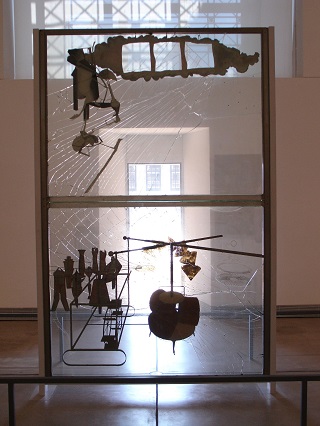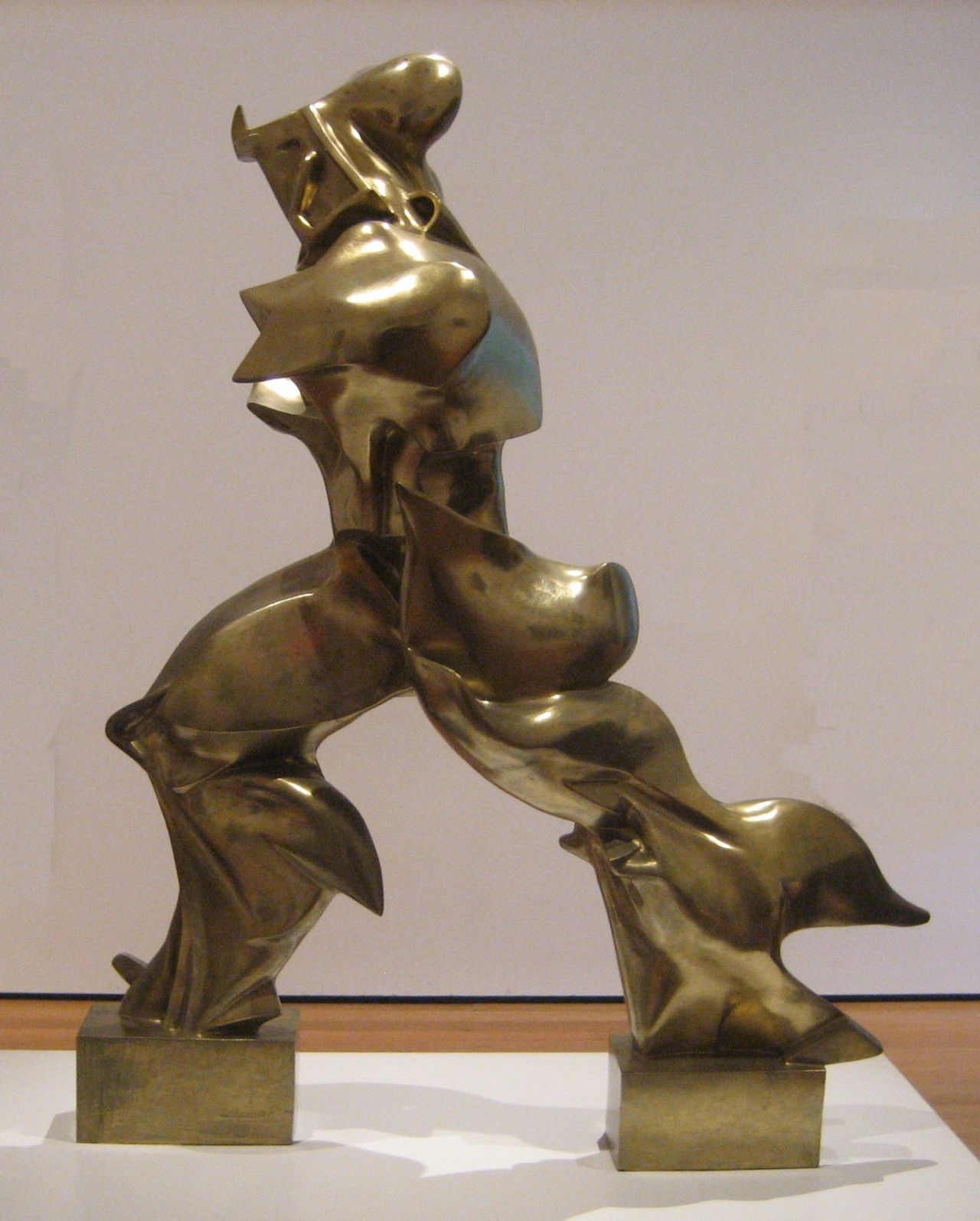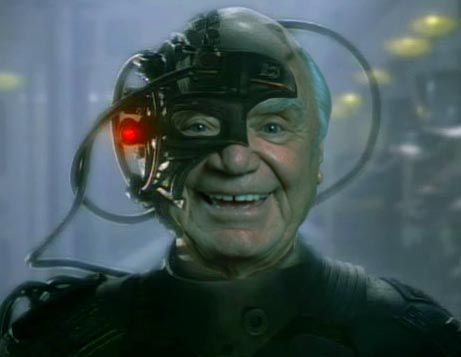Assignments for chapter 2: posthuman¶
Reading Assignment: What does it mean to be posthuman?¶
- Hayles, N.K. (1999): "How we Became Posthuman." In: D. Byrne-Smith (ed.) (2020): Science Fiction. Cambride, Mass: MIT Press. pp. 157-160.
Info
This book is available at the Minerva Media Library; in the closet immediately on your left if you enter from the side by the stairs. It is unlendable, but you can read it there.
Questions
-
Hayles gives the following summary of the Turing Test: "Your job is to pose questions that can distinguish verbal perfomance from embodies reality. If you cannot tell the intelligent machine from the intelligent human, your failure proves, Turing argued, that machines can think." (p.157). Nowadays, we have these kinds of machines (e.g. chatGPT, or the smart speakers such as Alexia or Siri). Do you agree with Turing's conclusion that therefore machines can think?
-
Intelligence, she states, "becomes a property of the formal manipulation of symbols rather than enaction in the human life-world" (ibid). Can you reflect on this notion, given our discussion about the 'automatic', 'subconscious', 'Zuhanden' ('Ready-to-hand') skillful coping of our everyday life? can you relate this to Descartes' notion of *res cogitans' and 'res extensa'?
-
Given Turing's argument, do you think that artificial creational machines, such as e.g. Dall.E or Microsoft Bing, are creative?
-
Read this small section on the Chinese Room Experiment (an experiment by philosopher John Searle to counter Turing's thesis). What do you think of this idea?
Large Glass¶
La mariée mis à nu par ses célibataires, même (The bride stripped bare by her bachelors, even) is a freestanding work by Marcel Duchamp. This work is usually called Large Glass (Le grand verre), because it is rather large (over 2.5 meters high) and made of two panes of glass (with some lead oil and dust in order to create the figures).

The figure in the upper pane is the bride; sitting silently in a more or less vacuous space, she appears to be completely sovereign and authentic, as if she inhabits an insect-like world that we as humans can witness and relate to, but which is of necessity always at a distance.
The lower pane shows the bachelor machine: nine bachelor figures are handles with machinery that obviously perform some kind of function but that is unknown to us (which reminds us of the way animals are treated in industrial slaughterhouses). From the title of the work, we can see that there is a relation between the bride and the bachelors, but the exact workings of this relationship remain unclear.
To avoid only visual responses to the work, Duchamp intended the Large Glass to be accompanied by a book, called Boîte verte (The green box; perhaps the color green was chosen because of the likeness of verte to verre). This box contains notes and descriptions of the working of the artwork and especially the bachelor machine.
Questions
-
Can you see differences in style between the upper and the lower pane? If you look at the descriptions of both panes, what do you think these different styles represent? Why are the panes created in these specific styles?
-
Mediatheorist Dieter Daniels states that the difference between the bachelor machine and the Turing machine lies in the fact that the first keeps suffering from 'the unattainability of a perfect substitute' (Daniels 2007, p.125). If you think back to the discussion we had in the first chapter, about the instant gratification that technology offers (cars, phones), would you say that the universal or the bachelor machine is a better illustration of contemporary technology?
Unique forms of continuity in space¶
The sculpture Forme uniche della continuità nello spazio (Unique Forms of Continuity in Space) by the futuristic artist Umberto Boccioni is an attempt to display speed, motion and forcefull dynamics in a silent, plastic and temporal medium (bronze, plaster). In this statue, he tries to depict synthetic continuity instead of the analytic discontinuity that he saw in the works of Duchamp.

The futurists were obsessed with speed, power, war, progress, machines and motors. Boccioni, though painter by training, became obsesses with sculpture during the 1910's. He claims that this is the complete renovation of that mummified art ("Credo di aver visto una completa rinnovatione di *quest'arte mummificata").
Questions
-
Technology: You can no doubt see the great dynamicity in this sculpture – and if you look up other works by Boccioni, you will notice that most of his works display this feature. At the time, speed was, of course, the next big thing. Can you think of contemporary artworks or art movements that are in a similar fashion related to today's (technological) next big thing?
-
Future: The futurists were really political – many of them were the first to volunteer when war broke out in 1914. With our discussion of Nietzsche's notion of the artists as signposting the future at the back of your mind, can you think of artworks (or art movements) that are also very political – and in that sense point the way to the future?
Reclining StickMan¶
This installation by Stelarc is a 3 meter long robot that is operated by the visitors. Anyone anywhere can remotely access and actuate the robot. The artist himself is positioned on the torso of the robot and is thus a toy at the whim of the spectator.
The performances of Stelarc usually focus on the extension of the human body. As a basis for his works he holds the thesis that the human body is obsolete and that something better (sc. robotics) will take its place.
Questions
-
As we will see during this week's session, we have always added technological artefacts to our bodily givenness. However, most of us would refrain from calling glasses or hearing-aids 'artworks' in the modern sense of the word. On the other hand, one would perhaps call the robots of Boston Dynamics artworks and most of the general public would certainly call Stellarc's work 'art' (if only because it is usually displayed at art festivals). Can you come up with edge-cases where the difference between artificial (!) additions to the human body on the one hand and technological artworks on the other becomes apparent? You can perhaps also come up with your own ideas, even if those do not (yet) exist.
-
Turing was trying to replicate the human being in a functional form, leaving the embodiedness completely behind. Today, we see this functionality repeated in the examples of ChatGPT or perhaps even online games such as World of Warcraft. On the other hand, Stelarc and Boston Dynamics are focussing completely on the human body – trying to either enhance, replicate or replace it. Do you think post-humanism is achieved once we have left our bodies behind, or when we have completely changed our biological make up into something technological?
